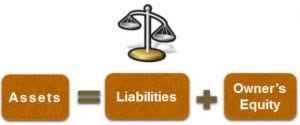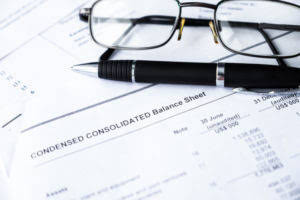Content
- Why You Can Trust Finance Strategists
- Which lease is right for your business? Well, it depends.
- Lease Accounting Blog
- less with BioStar’s EnergyShare leasing than if you paid cash upfront!
- Non-lease Repair and Maintenance Contract
- Lease Accounting
- Leased Liability and Leased Liability Interest Expense
- Do we have to capitalize every lease?

Because a capital lease is a financing arrangement, a company must break down its periodic lease payments into an interest expense based on the company’s applicable interest rate and depreciation expense. A capital lease is an example of accrual https://www.bookstime.com/ accounting’s inclusion of economic events, which requires a company to calculate the present value of an obligation on its financial statements. An operating lease is expensed like every other expense in the period it was incurred.

The year’s closing balance is calculated as lease liability + interest – lease payment. Capital lease payments reduce the liability for the lease, and the interest on lease payments is a deductible business expense. Standards govern the classification not just the lessee but also for the lessor. Our model confirms that the interest expense and capital lease payment is $100k each period, which is equivalent to the $100k annual lease payment. By the end of our forecast, we can see that the right-of-use asset (ROU) and the capital lease liability have declined to an ending balance of zero in Year 4.
Why You Can Trust Finance Strategists
Accumulated depreciation is set off against the gross asset value to get the net book value of the leased asset in the balance sheet. The previous lease standard considered four “bright-line” rules when classifying a lease as capital vs. operating. These rules were clear, but inflexible and could result in calculations that did not https://www.bookstime.com/articles/capital-lease-vs-operating-lease make sense for a particular organization. Under the new lease standard, these criteria have been updated to allow organizations more flexibility and judgment when classifying a lease. The Financial Accounting Standards Board changed the lease accounting game forever when they declared the ASC 842 new lease accounting standard.
- For example, when you work with Excedr, you obtain the equipment quote from the manufacturer of your choice and send it to us in order to begin the approval process and initial discussions.
- Today, he is looking at a new Bobcat he will use to help grade land and carry around lumber.
- With a capital lease, the lessee is required to record the leased asset on its balance sheet because the lease establishes them as practically the owner, i.e. one of the conditions set under GAAP is met.
- Leased assets are treated as depreciable assets when they get classified as capitalized.
- To record a capital lease in your business accounting system, you must first determine whether the business owns the leased item.
With a capital lease, you are essentially paying the cost of the car or equipment over the term of the lease. From Year 1 to Year 4 – the four-year lease term – the ROU asset is reduced by the depreciation expense until the asset’s value declines to zero (i.e. “straight-lined”), meaning that the annual depreciation is $93k per year. Suppose a company has agreed to borrow an asset for a four-year lease term with an annual rental expense of $100,000 and an implicit interest rate of 3.0%. One consideration, however, is that the materiality threshold for leases under ASC 842 must be applied to whole asset groups, not individual leases. For example, if a company determines it has immaterial copier leases, it must aggregate all its copier leases and analyze the total amount of copier leases for materiality to stakeholders . This expense represents the lease cost and may differ slightly from the cash payment made each period.
Which lease is right for your business? Well, it depends.
The term should take into account any options to extend or terminate the agreement that are reasonably assured of being exercised. If less than 75% of the total life expectancy of the asset is covered by the lease term, then it is presumed that ownership transferral has taken place and the lease should be considered a finance lease. Some obvious purchases that were being financed through leases were considered operating leases when they should have been considered capital leases. Now that you understand what a capital lease and an operating lease are, you might be wondering which one is better.
All such information is provided solely for convenience purposes only and all users thereof should be guided accordingly. Over the entire 5-year period, the total expense in both cases is $69,350, which represents the total cash outflows. The account entitled Obligation Under Capital Lease is a liability, of which part is classified as current and part as long term. In general, it can take anywhere from a few days to a few months to receive your equipment, depending on the manufacturer’s lead times.
Lease Accounting Blog
The financial statements on the right side are the financial statements after the operating lease capitalization adjustments are done. Operating leases do not transfer ownership of the asset when the contract ends. The asset can only be purchased at its fair market value unlike a capital lease. Operating leases have lower monthly payments because you are not financing the entire cost of the asset. If these 4 conditions are not met, the lease will be classified as an operating lease.
The classification of an operating lease versus a finance lease under the new guidance is determined by evaluating whether any of the finance lease criteria are present. If a lease agreement contains at least one of the five criteria, it should be classified as a finance lease. However, companies should consider how the new operating lease assets and liabilities could potentially impact their financial ratios. There are a number of key differences to note if your business is trying to determine if it wants to use either an operating lease or a capital lease. Fundamentally, the lease obligation of a corporation gets recorded as an asset under this method of accounting. Before getting deeper into the method, let’s understand the implications of capitalized lease obligations.

Comentarios recientes